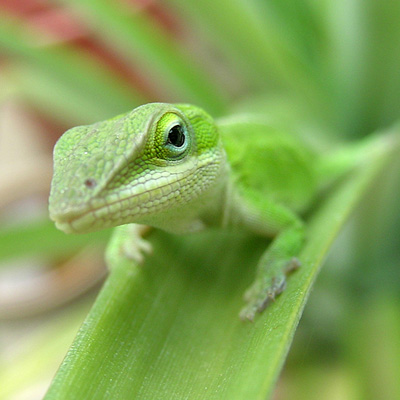Taking classroom pets home for the weekend was a kindergarten ritual 40 years ago, along with the scurrying to find the bunny corpse behind the couch and returning it to class Monday morning.
 It’s not dead. It’s sleeping. Tuckered out.
It’s not dead. It’s sleeping. Tuckered out.
Jerry Curtsinger of Louisville, Kentucky, thought it would be a good idea if his kids could bring home the green anoles, a type of small, green lizard, that are apparently science class favorites.
Curtsinger said the problems began two weeks after his kids took home two lizards from school.
"Caden, our youngest, he got sick, and he had a fever of between 101 and 102.”
In the weeks that followed, Curtsinger and his two other children also became violently ill. And he said the doctor’s diagnosis was salmonella.
Curtsinger learned about three out of four lizards carry salmonella. So he brought his concerns to the Jefferson County Public School District.
Lee Ann Nickerson, a science specialist with JCPS, said JCPS has a standard letter that is sent to all parents when their children want to adopt any kind of class pet, which outline the guidelines of each adoption and give some caretaking tips. After the Curtsinger family’s salmonella episode, a new warning was inserted into that letter in bold italics.
Those classroom pets are now on double secret probation.
Nickerson said JCPS has been using lizards to demonstrate habitats in science class for several years, and this is the first time anyone has contracted salmonella from them. She also noted that other common pets, such as dogs, can also carry salmonella. Like lizards, they’re perfectly safe as long as you practice proper handwashing when you handle them.
I’m sure that’s tremendously comforting to the Curtsinger’s of Kentucky.

 This 3-credit hour course at Kansas State University is offered through the Department of Journalism and Mass Communications, and listed as MC 690 Section C. Class meetings are scheduled for Wednesdays at 5:30 p.m.
This 3-credit hour course at Kansas State University is offered through the Department of Journalism and Mass Communications, and listed as MC 690 Section C. Class meetings are scheduled for Wednesdays at 5:30 p.m. 